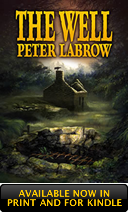When reviewing books, I’m usually careful not to reveal too much of the plot – after all, while I might want to encourage people to read a book, I don’t want to spoil it for them.
For those who like to avoid spoilers, feel free to stop reading after this paragraph. I’ll simply say that this is one of those ‘must-read’ books. I enjoyed it from beginning to end, though it wasn’t anything like I expected in any way. I was certainly more than a little sorry that this is a book discovered later in life, as I expect to return to it more than once.
It’s said that we judge a book by its cover, but I’ve always felt that was wrong. Perhaps we might buy a book based on its cover, but judging any book on such scant information – a title and picture – is seldom right. Never more so than with Slaughterhouse-Five, which for years I’d suspected is set in the future (it isn’t) and centres around a place of grim violence (it doesn’t). Why it’s called Slaughterhouse-Five is something I’ll hold back as a joy for you to discover, should you deem to read it.
Slaughterhouse-Five is the story of Billy Pilgrim’s life, framed around his time in the Second World War – more specifically, the terrible bombing of Dresden, of which he is, was and will be a survivor. I say is, was and will be partly because the book is written in snatches – small chunks of Billy’s life from seemingly random points. I also say this partly because that’s how Billy experiences time – for him, it’s not linear.
It’s a story not told by Billy, but by someone who knows him. The author has promised himself – and many others – that he will write something about the bombing of Dresden; something that brings a kind of meaning to the events there. But he can’t. He struggles to recall it and friends he was with do the same, or are reluctant to speak of it. It almost falls into being a story about Billy, while at the same time becomes a story about Dresden. It also is, perhaps more than anything else, a story about death.
Death pervades almost every part of this book, sewn into its every paragraph like stitches that hold the piece together. And yet it’s not the death that we might expect. It’s not a brooding or violent death, more an essay in how to put death into the story of life. It talks about death as not something to mourn or fear, but more an inevitable part of a greater whole – life and existence – that is to be celebrated. So it goes. (I won’t spoil what that little phrase means, either.)
The writing style is welcoming – open, honest and conversational snippets that convey far more than posturing prose ever could. It’s an easy read. As Billy travels through life – and time – his story unfolds. Yet much of the writing is achingly beautiful, despite the apparent simplicity of the prose. It’s both philosophical and poetic; it’s never condescending or pretentious. And it’s also not a book about time-travel: this is not The Time-Traveller’s Wife. Time-travel is not a plot device, it’s a means of unfolding the story, and a way in which both life and death can be put into context.
This is also part of Billy’s journey – how he must convey to others what he knows is the truth of life, time and death. It’s a mission he undertakes late in life – and involves him revealing to others something about himself (with disarming honesty) that can, for many, only serve to fundamentally undermine the integrity of his viewpoint. I won’t spoil this for you either, but this key point is written so deftly that you’re never sure if it’s a delusion or fact. Not that this matters. Billy can’t convey his philosophy without revealing how it came about – and why he knows his philosophy to be fact. It’s part of a whole – and the whole has to be accepted for any part of it to make sense.
In many ways, it’s a highly unusual novel. As the book itself says of war (and perhaps of itself): “There are almost no characters in this story, and almost no dramatic confrontations, because most of the people in it are so sick or so much the listless playthings of enormous forces.”
Slaughterhouse-Five is both casual and epic. It’s an easy tale with a deep, deep message, wrapped into a tale of life, woven into a story of war.
And war is enormous – yet we sometimes lose perspective. We think of the bombing of Hiroshima as one of the Second World War’s biggest events, where 71,379 people died. Yet on a single night, 5 March 1945, Americans dropped high explosives and incendiary bombs on Tokyo – killing 83,793 people. And Dresden? Around 130,000 people were killed in one night. So it goes.
Billy survived Dresden by ironic chance of the place in which he was held prisoner – and went on to explain to others that it was neither something that had to be done nor could have been avoided, it ‘just was’. If you have war, you have death. If you have life, you have death.
I doubt that any book could make sense of (let alone give meaning to) something as awful as the bombing of Dresden, or part of any war – or indeed war itself. But death is part of war as death is part of life and Slaughterhouse-Five gets as close to raising our awareness of where death fits into life as any book I’ve read. A truly excellent book and one that is easily worthy of its reputation of being a modern masterpiece.


Leave a comment